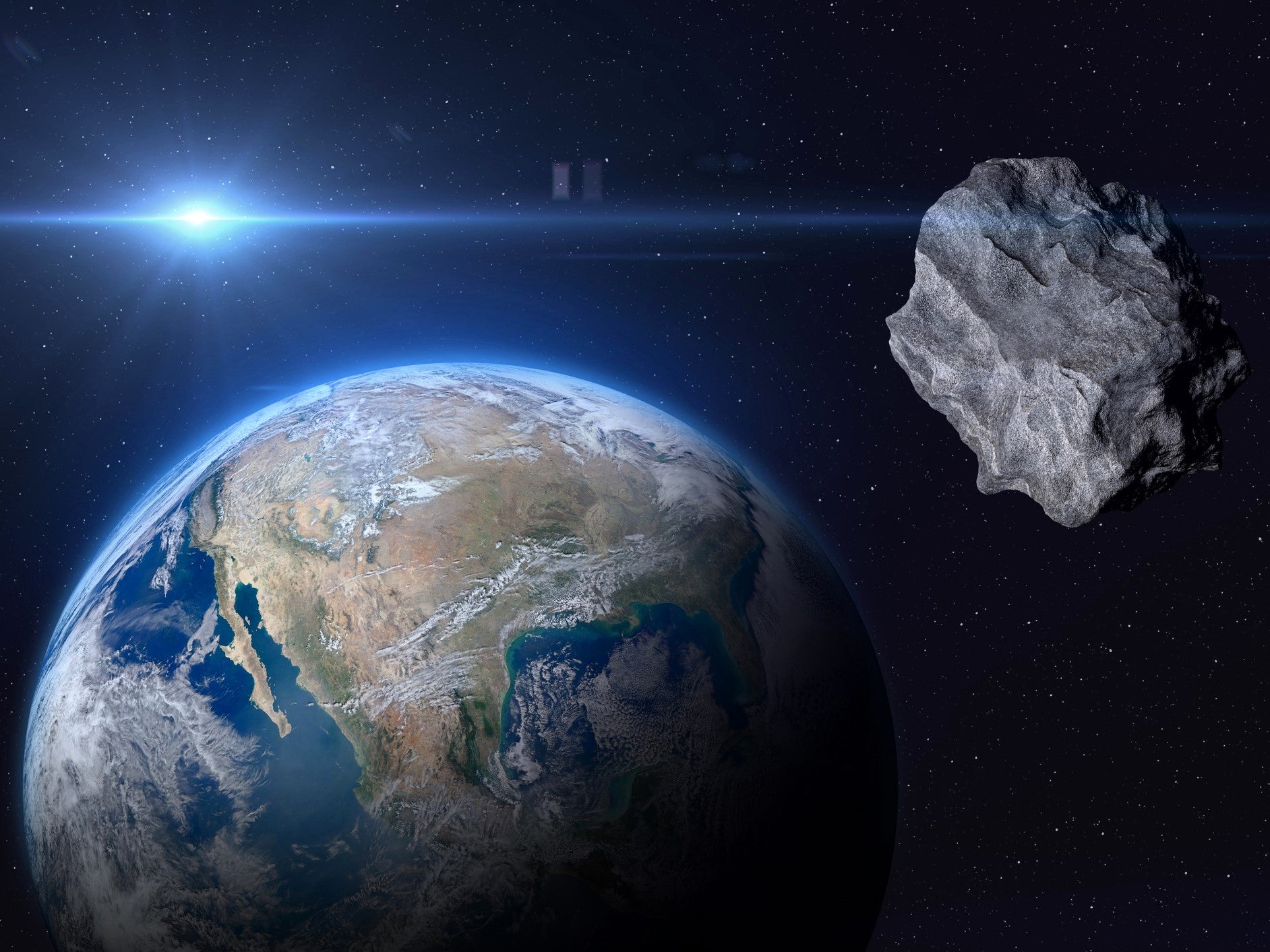Large asteroid flies close to Earth – and is only spotted days later
Object came with a quarter of the distance between us and the Moon

Earth narrowly avoided an asteroid that flew past last week – and scientists did not spot the object until it had made its visit.
The object, named 2023 NT1, was spotted on 15 July by the Atlas observatory in South Africa. Astronomers there say it was up to 60 metres in size.
But at that point it had already made the dangerous bit of its journey: two days earlier, it had swept past Earth, at just a quarter of a distance between us and the Moon. At 60,000 miles away, that is a long way from doing any damage, but relatively close for an asteroid.
As such, the asteroid didn’t pose any danger to Earth. But it was an important reminder that truly dangerous asteroids could fly towards Earth – and that we might not spot them until they are too late.
That is because many asteroids, including 2023 NT1, fly towards us from the Sun. The bright light of our star can make it difficult to see anything else, especially asteroids that are relatively small at the scale of space.
The European Space Agency estimates there could be a million asteroids in the same size range of 30 to 100 metres near Earth. And 98.9 per cent of them are still undiscovered, the space agency says.
It has said that shows that there needs to be an improvement in the capabilities of humanity to detect such asteroids. Some are already being worked on, such as ESA’s NEOMIR, which will orbit between the Sun and the Earth and is designed to work as an early warning system for asteroids that would otherwise avoid detection, but will not launch until 2030.
The asteroid 2023 NT1, at 60 metres across, is among the largest to have come so close to Earth in recent times. At that size, it could have done significant damage: the Chelyabinsk meteoroid that injured 1,500 people and damaged buildings when it fell to Earth in 2013 was only 20 metres across, for instance.
From its approach last week, scientists have been able to catalogue and predict the asteroid’s movements. That should make it possible to track and spot it next time it comes close to Earth.
Subscribe to Independent Premium to bookmark this article
Want to bookmark your favourite articles and stories to read or reference later? Start your Independent Premium subscription today.

Join our commenting forum
Join thought-provoking conversations, follow other Independent readers and see their replies